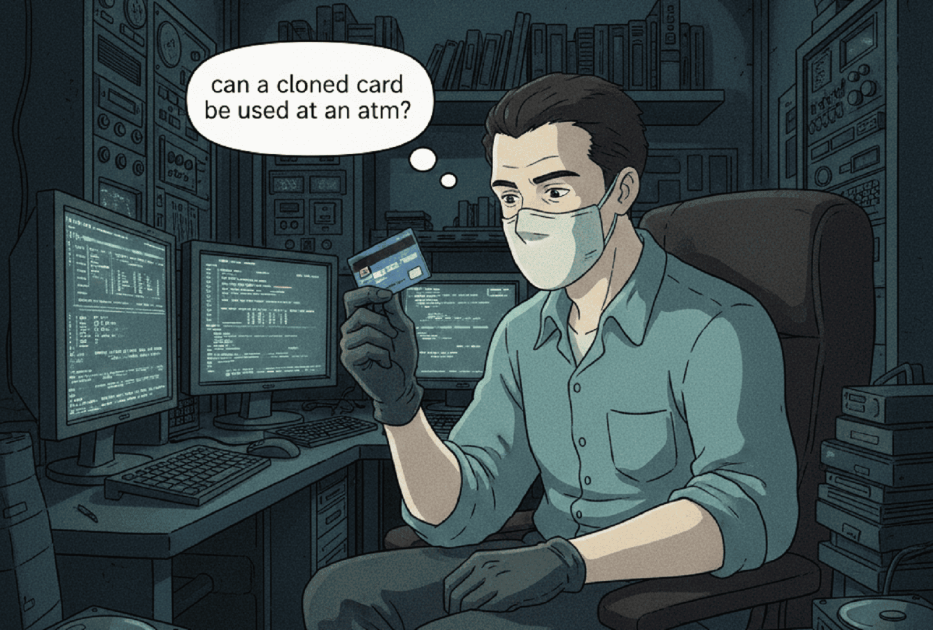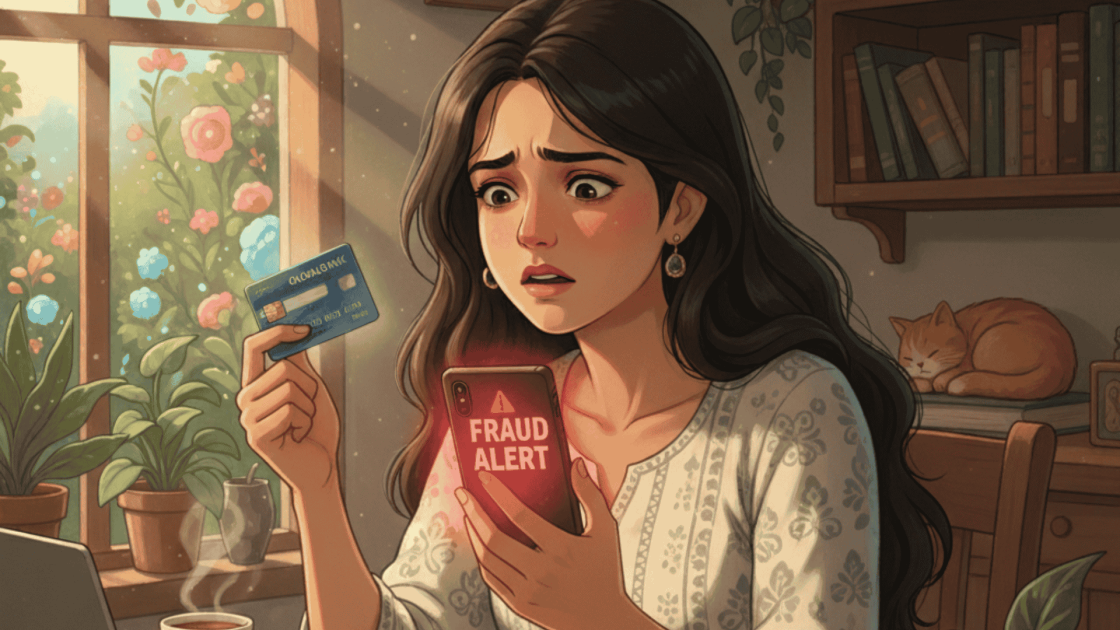Picture this: you’re standing at an ATM late in the evening, waiting for the cash to dispense… and suddenly you catch yourself wondering, “How safe is this machine really?”
What if the card gets cloned? And the most important one, can a cloned card be used by an ATM?
No doubt, ATM card cloning scams have quietly become one of the most unsettling financial tricks out there.
They don’t involve hacking high-tech servers or guessing complicated passwords. All it takes is a tiny device, a bit of distraction, and a scammer who knows exactly what they’re doing.
So, let’s break it all down, how ATM card cloning really works, whether cloned cards can still be used, the risks scammers take, and how you can protect yourself long before trouble starts.
ATM Cloning Scam
ATM card cloning (also known as skimming) happens when criminals secretly copy the data stored on the magnetic stripe of your debit card. They usually do this by installing:
- Skimmers on the card slot
- Fake keypads
- Hidden cameras
- Overlay devices that look shockingly real
Once they capture your magnetic-stripe data and your PIN, they can create a duplicate card and attempt to withdraw money.
And yes, the scary part is that at older or poorly secured ATMs, a cloned card can sometimes work.
But not without massive risks, for both you and the criminal.
Can a Scammer Use a Cloned Card at an ATM?
Short answer: Sometimes.
There are a few ATM card cloning complaints and reports where users have lost thousands in a matter of seconds due to an ATM clone scam.



So yes, the scam is real and scary too, but with modern technology, it is comparatively difficult today
Here’s the deal:
Modern ATMs don’t just rely on magnetic stripes anymore.
They use several layers of verification to stop cloning dead in its tracks. When a cloned card does work, it’s usually because:
- The ATM is outdated and relies only on magnetic stripe data
- The transaction is happening in a country with weak EMV enforcement
- The criminal is targeting a compromised or offline ATM
But the moment a cloned card is inserted into a properly updated ATM?
Boom, the system detects it instantly.
- EMV chip authentication fails.
- Fraud alerts fire off.
- Suspicious activity gets flagged.
No wonder banks report that chip-based authentication has reduced card fraud massively.
Can a Cloned Card Be Used Contactlessly?
Not a chance. Contactless systems use:
- Dynamic cryptograms
- Tokenization
- Transaction-specific codes
You can’t copy something that changes every time.
Risks of ATM Card Cloning
Even though cloned cards are harder to use today, scammers only need one weak ATM to strike gold.
Here’s what typically happens when a cloned card does work:
- Sudden cash withdrawals from unfamiliar locations
- Multiple small “test transactions”
- ATM attempts in another city or country
- Repeated withdrawal failures followed by a successful one
And the worst part? Most victims notice only when money has already vanished.
How to Know if Your Card Has Been Cloned?
Look out for:
- Unauthorized withdrawals
- Transactions from cities you haven’t visited
- Declined transactions despite funds
- Bank alerts for “unusual ATM usage”
- Multiple small charges (fraudsters testing the card)
Your bank’s fraud system may even block your card automatically if it detects cloning patterns.
How to Protect Yourself from ATM Card Cloning?
Here are some simple steps that can prevent ATM card cloning:
- Inspect the ATM Before Using It: If the card slot looks bulky, loose, crooked, taped, or “odd”, then stop. If the keypad feels raised or spongy, stop immediately.
- Cover Your PIN Every Time: A hidden camera can’t steal what it can’t see.
- Use ATMs in Safe, Well-Lit Areas: Prefer bank-branch ATMs over standalone kiosks.
- Avoid ATMs with Damaged or Tampered Panels: Any cracks, glue, or loose parts, walk away.
- Enable SMS/Real-Time Alerts: You’ll catch unauthorized withdrawals instantly.
- Prefer Chip or Contactless Transactions: These are extremely hard to clone.
Where to Report ATM Card Cloning Complaints?
If there is an unauthorized transaction using your ATM card, then act fast; timing matters and:
- Call your bank immediately to freeze your card
- Dispute unauthorized transactions
- Request a new card and account number
- File a Cyber Crime Complaint on the National Cybercrime Portal
- Visit your nearest branch if large sums were stolen
- Monitor your account for the next 12–24 months
Most banks offer zero liability protection if you report quickly. However if you need any assistance while reporting about ATM cloning you can register with us we will help you with step-by-step guidance on how to recover your money or take legal action against such fraudsters.
Conclusion
ATM cloning used to be a serious financial threat — and while criminals still try, modern banking systems have made it incredibly difficult for cloned cards to succeed, especially at updated ATMs.
Still, the scam hasn’t disappeared.







